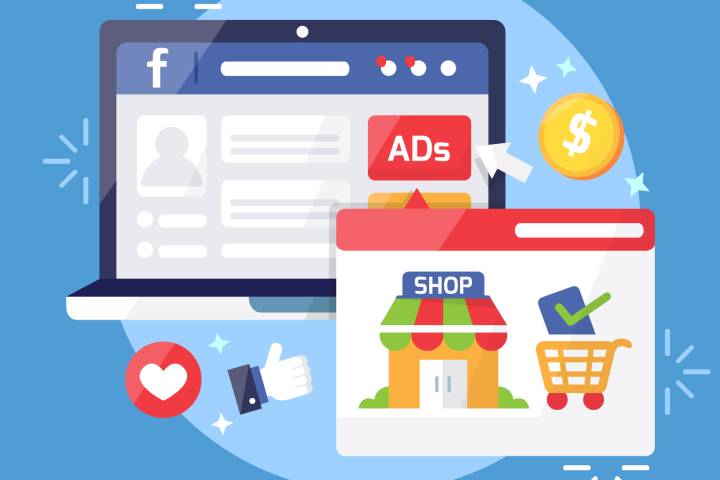OMNIMIX offers its case, which we use when setting up advertising campaigns for our clients.
Audience Optimization
Install the Pixel Facebook (website) or SDK (mobile app). This will optimize the audience for the advertising campaign. With the help of the tool, Facebook’s algorithm learns and independently decides which user is more likely to take practical action on the site or in the application: view the product, add it to the cart or make a purchase. And the dynamic offer of goods significantly saves time, eliminating the need to test each product individually in a manual format.
The Pixel integrates seamlessly into OpenCert, 3dcart, Shopify, Magento, Wix, BigCommerce, and Stored. The number of transitions and views will be pulled up automatically.
Event Setting
Events are actions performed by a user on a website or application. Facebook allows you to set up events of different formats; however, for dynamic ads to work correctly, you must configure the following events:
- ViewContent – The user has visited essential pages (such as product pages or landing pages). This is the most straightforward action for optimization and, as a result, the very first stage of the funnel.
- Add to cart – the user has added a product to the cart. We move deeper along the funnel; the user is already one step away from buying. In the case of the first two events, dynamic retargeting works great; you can return the user to the site with the goods that he looked at or added to the cart but did not dare to make a purchase.
- Purchase – the user has made a purchase or completed order. The cherished goal of any online store. As a result, you should get the following list of events based on your FB pixel in the Events Manager:
Additionally, events must be added by priority in the “Measurement-based on aggregated events data” tab; this will help improve the results for ads for users of iOS version 14.5 and higher. To do this, you will need to verify the domain in your Business Manager.
Parameter Setting
For dynamic impressions and retargeting, in particular, several parameters are essential. The connection for the system algorithms will be built: which product a particular user viewed and which one he bought.
Parameter setting is performed simultaneously with the events. They provide detailed information about the product. For instance:
- content_type – content type. Should be a product value, provided that content_ids holds the value of the id of the viewed product. If content_ids stores the value of a product group, then product_group is specified in the content_type.
- content_ids / contents – systematizes products (a specific product is selected from the catalog (feed)) and associates with the event;
- Value – transmits data about the cost of the event.
The best scenario, in this case, is a customized dataLayer array, with which you can transfer data to Google Tag Manager.
Setting Up A Product Catalog
Currently, Facebook offers five categories for the directory:
- e-commerce with goods;
- travel (hotels, flights, tourist destinations);
- real estate (sale and rent);
- auto;
- entertainment.
Each direction has its characteristics during the setup.
When creating a catalog, refer to the Catalog Manager instructions. Associate a catalog with pixel events and upload products. You can do this in several ways:
- manually – for advertisers who work with a small number of products;
- automatically – through e-commerce platforms (Shopify and BigCommerce);
- through Pixel data and micro tags – you can’t do this without a developer;
- Through a product feed – choose any convenient method (manual upload, link to a document), the feed generated for the Google Merchant Center is integrated without any problems.
The algorithm is intuitive; the main thing is to understand what data you need to download.
How to Optimize Facebook Dynamic Ads
Dynamic advertising, like any tool, needs to be adjusted and adjusted. Such experiments make it possible to choose the appropriate option specifically for the selected niche. A few more recommendations from OMNIMIX experts:
- Track analytics, adjust your advertising budget, and reduce costs by excluding unwanted products.
- Check how Pixel works. To do this, refresh the “Events” page.
- If the results when working on the “Purchase” end goal are not satisfying, try to go down the funnel and work, for example, on the “Add to Cart” conversion.
- If your ad targets multiple countries, adjust the language settings. This point is often forgotten, so customers are lost.
- Optimize your advertising campaign for mobile search results. To increase conversion, create high-quality photos. The maximum number of pictures in the mobile search carousel is 30.
- Often, narrow targeting by interests can prevent the Facebook algorithm from accelerating and finding a natural target audience for you who will buy, so we recommend that you trust the system and leave only the geography and age of users in your work.
These recommendations help us find the best solution for even the most specific business niches. Dynamic advertising is one of our favorite tools that we know how to work with correctly to make it profitable. Before implementing such a tool, we study the client’s niche in detail to choose the right and most effective format. Have questions or want to order a service? Please write to us by mail: pr@omnimix.ru and leave a request on the official website.








